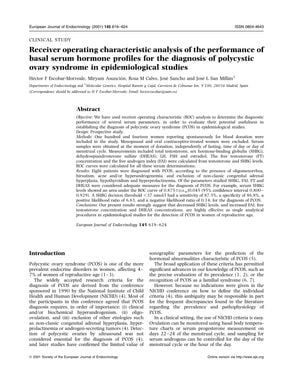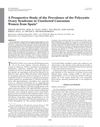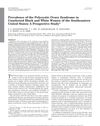Receiver Operating Characteristic Analysis of the Performance of Basal Serum Hormone Profiles for the Diagnosis of Polycystic Ovary Syndrome in Epidemiological Studies
November 2001
in “
European journal of endocrinology
”

TLDR Low SHBG and high FAI, FT, and DHEAS levels are effective in identifying PCOS.
In 2001, a study involving 114 women assessed the effectiveness of basal serum hormone profiles in diagnosing polycystic ovary syndrome (PCOS) for epidemiological research. The study measured hormones such as total testosterone, sex hormone-binding globulin (SHBG), dehydroepiandrosterone sulfate (DHEAS), LH, FSH, estradiol, calculated free testosterone (FT), and free androgen index (FAI). Using receiver operating characteristic (ROC) analysis, it was found that low SHBG levels and high FAI, FT, and DHEAS concentrations were effective in detecting PCOS. SHBG had the highest diagnostic accuracy with an area under the ROC curve of 0.875, a sensitivity of 87.5%, and a specificity of 86.8% at a threshold of <37 nmol/l. The study concluded that these serum parameters could be useful for identifying PCOS in large-scale studies, although further research is needed to validate these findings.

